Six of the Best! Croatian Protected Produce On Sale in China
September 18, 2020 – Six items of Croatian protected produce are among the 100 European items to go on sale in China
Six items of Croatian protected produce are among the 100 European items to go on sale in China. In a reciprocal deal, 100 Chinese products will also be recognised and recommended on the European market.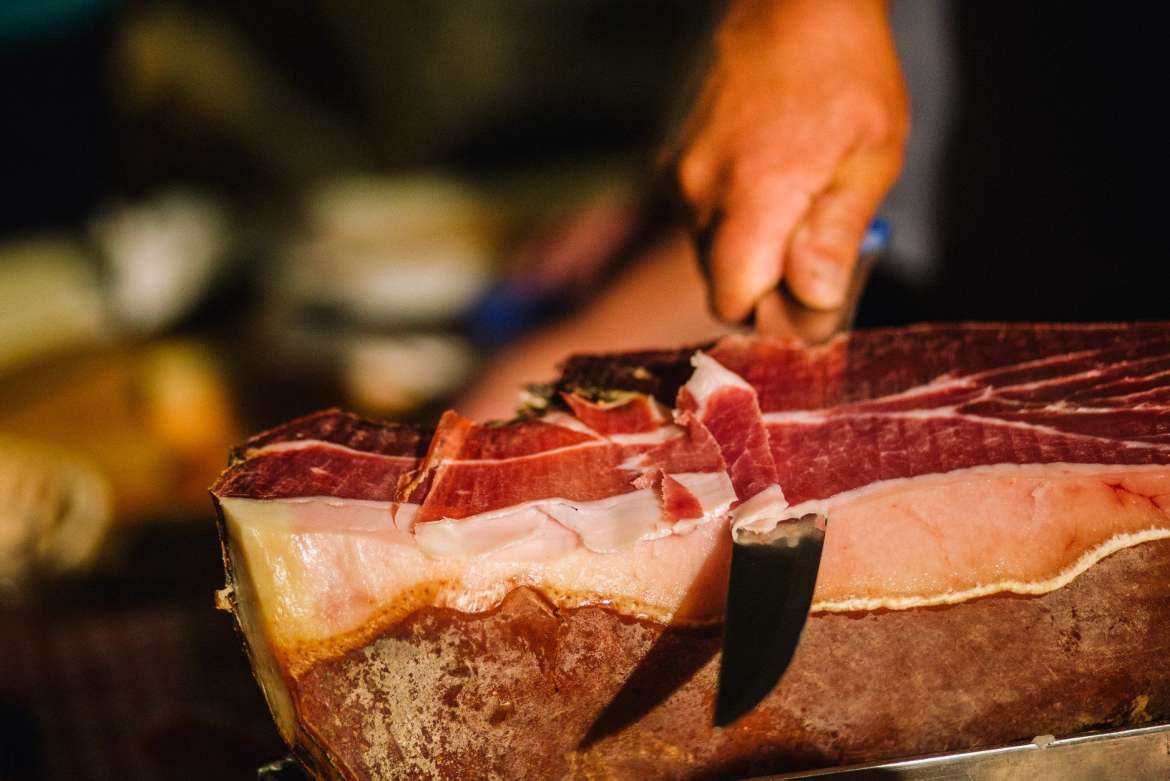 Dalmatian prosciutto © TZ Vrgorac
Dalmatian prosciutto © TZ Vrgorac
Baranja kulen, Dalmatian prosciutto, Drniš prosciutto, Lika potatoes, Dingač wine and Neretva mandarins are the premium six Croatian protected produce chosen to be among the European 100. All of the Croatian protected produce is already recognised at a national and at an EU-level and designated its status based on its unique place of origin.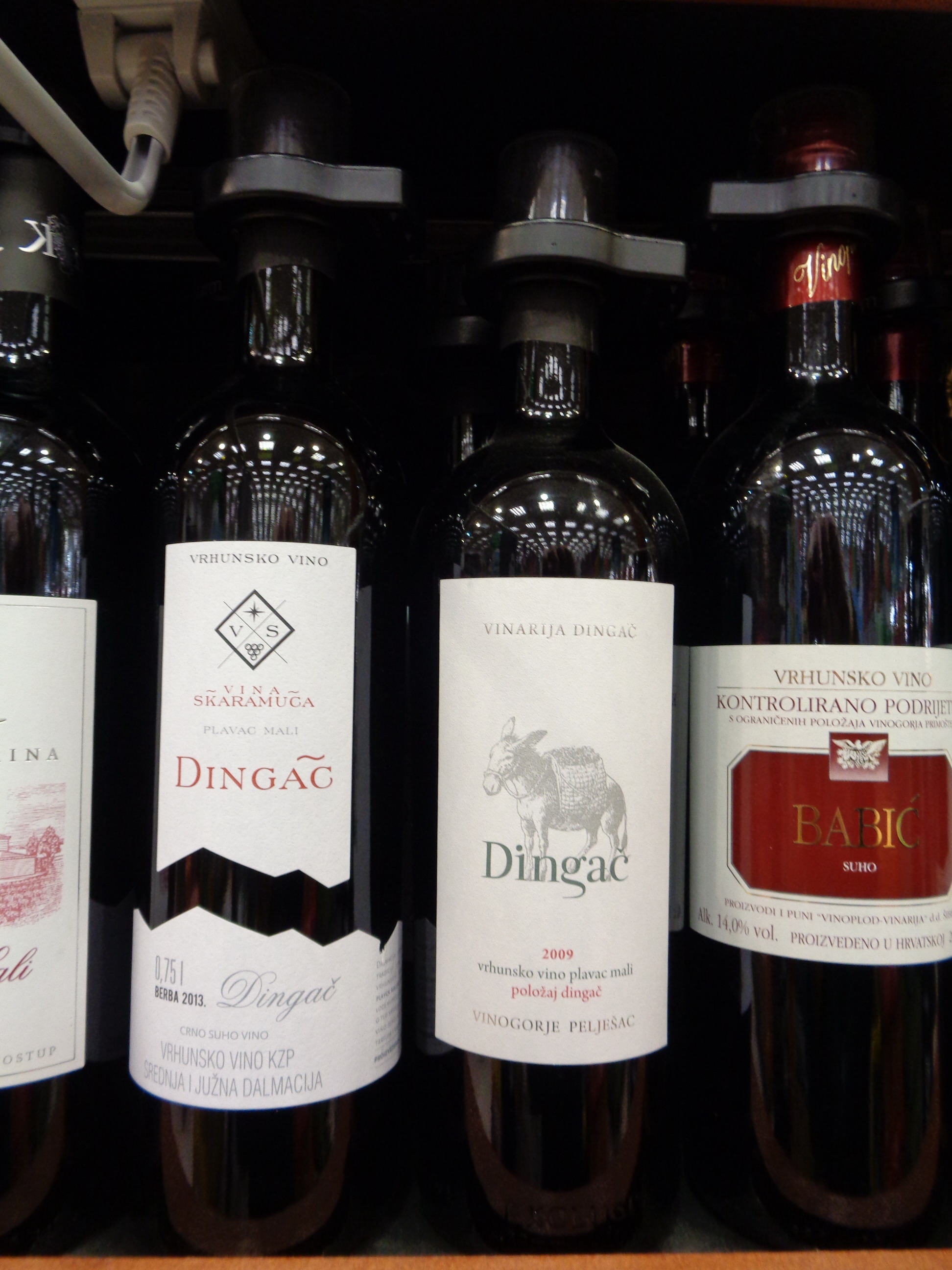 Dingač wine © Silverije
Dingač wine © Silverije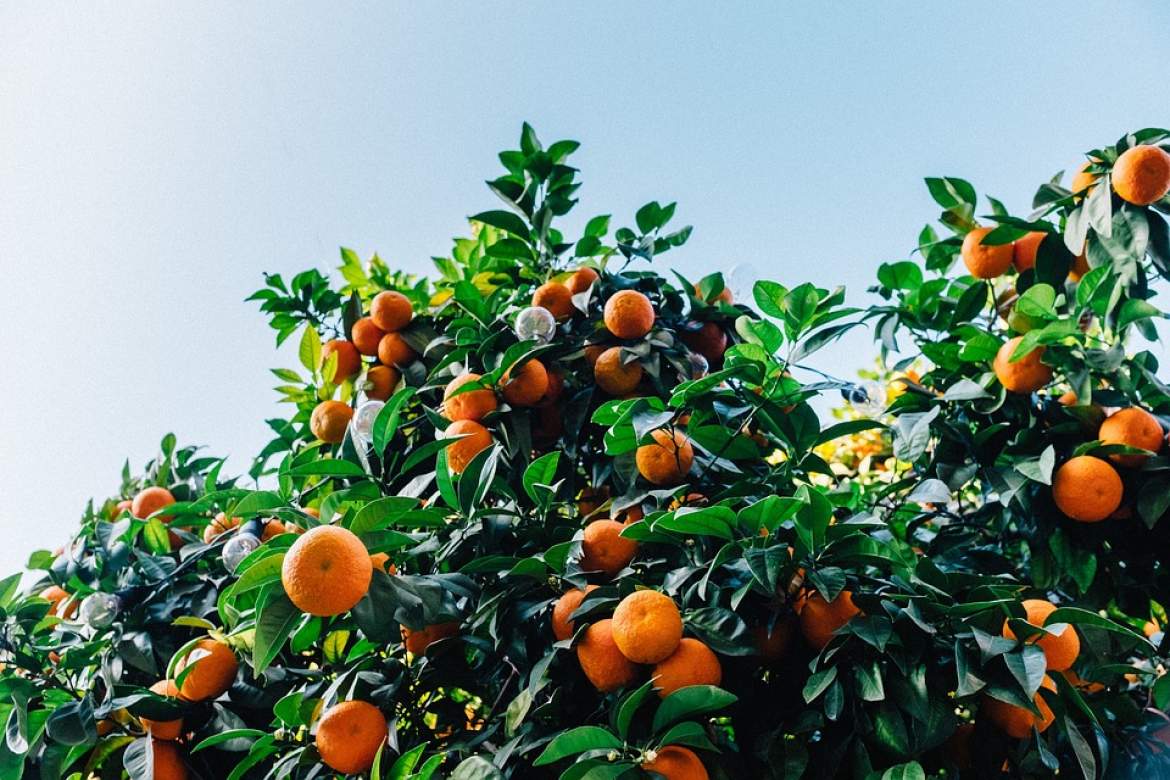 Neretva Mandarins
Neretva Mandarins
The European products will be specially marked and receive special privileges when they go on sale in China. Alongside the Croatian protected produce, other items on the European list are French champagne, Greek feta cheese, Italian Parma prosciutto, Italian mozzarella, Irish whiskey and Portuguese port. On the Chinese list of products are distinct varieties of rice, bean and vegetable products, some of which will already be popular with Europeans who eat or cook Chinese cuisine.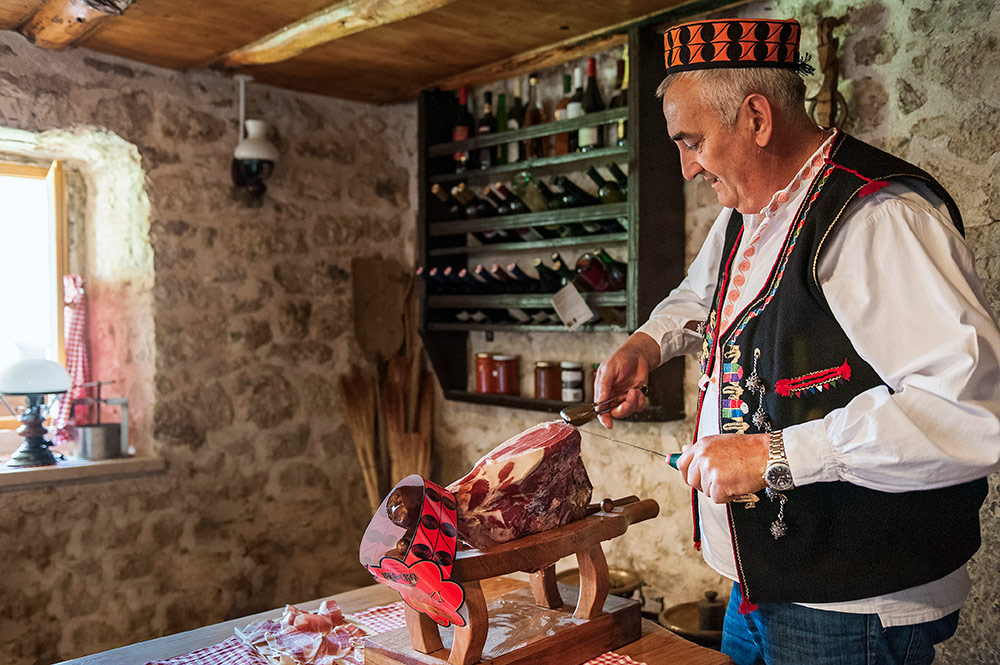 Drniš prosciutto © Tourist Board of Drniš
Drniš prosciutto © Tourist Board of Drniš
The full list of Croatian produce protected at an EU-level currently includes Istrian olive oil, Dalmatian prosciutto, Pag cheese, Lika lamb, Poljički Soparnik, Zagorje turkey, Korčula olive oil, Istrian prosciutto, Sour cabbage from Ogulin, Neretva mandarins, Slavonian honey, Drniš prosciutto, Cres olive oil, Pag salt, Baranja kulen, Bjelovarski kvargl, Varaždin cabbage, Pag lamb, Šolta olive oil, Meso 'z tiblice, Zagorje mlinci, Krk prosciutto, Lika potatoes, Slavonian kulen, Krk olive oil. Baranja kulen, featured within a traditional Slavonian platter © Romulić & Stojčić
Baranja kulen, featured within a traditional Slavonian platter © Romulić & Stojčić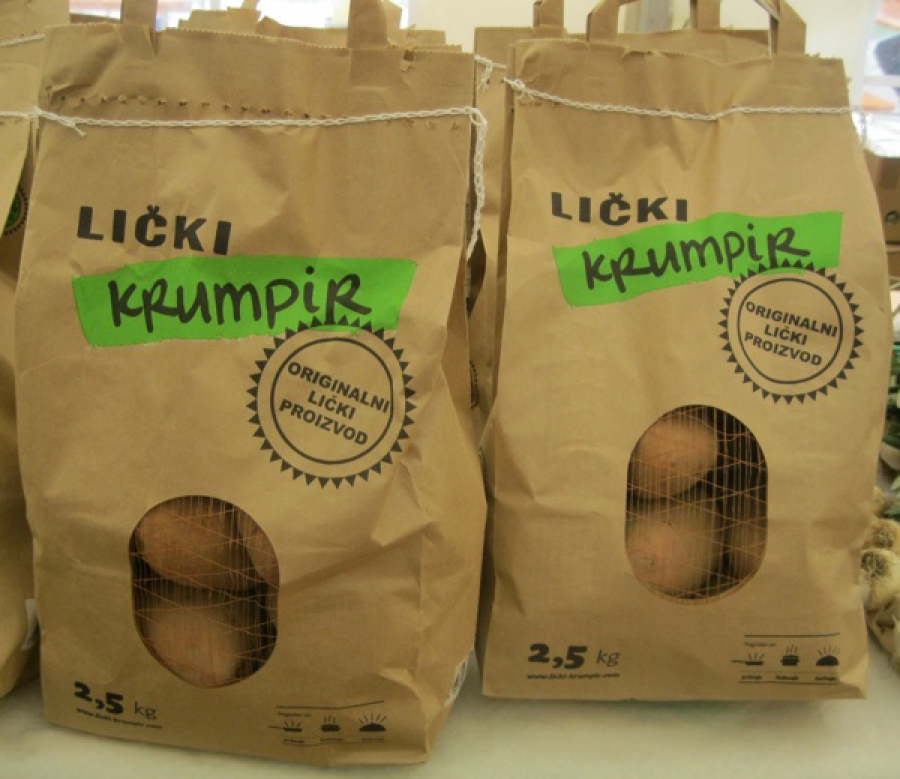 Lika Potatoes
Lika Potatoes
For the latest travel info, bookmark our main travel info article, which is updated daily.
Read the Croatian Travel Update in your language - now available in 24 languages
Nikola Tesla Returns To Gospić After 30 Years
August 22, 2020 – After being destroyed in the war, the famous statue of genius Nikola Tesla will finally return to his home town
Following a 30 year absence, the famous statue of Nikola Tesla will be returned to his home town of Gospić. The original Tesla monument that once stood in the central town square, created by Croatian sculptor Frano Kršinić, was blown up during the 1990s Homeland War.
Gospić mayor Karlo Starčević today signed a contract approving construction works for the renovation of the square in front of the Gospić Culture Information Centre, where the Nikola Tesla statue will be placed. The contract is worth about HRK 1.8 million.
The location where the monument will stand is planned as a quiet area with several benches and gravel footpaths. The statue is an exact replica of the one previously lost to Gospić. Copies of this statue currently reside outside the School of Electrical Engineering section of Belgrade University and on the American side of Niagara Falls (main picture).
Nikola Tesla is honoured on both sides of Niagara Falls. This is his statue on the Canadian side © Milan Suvajac
An inventor and hugely innovative engineer, Nikola Tesla is best known for pioneering the alternating current (AC) electricity supply system. AC enables electricity to be provided safely to every home, street and business today. Tesla was born in 1856 in the village of Smiljan, in Lika, just six kilometres from Gospić.
In 1862, his family moved to Gospić where Tesla's father worked as an Orthodox parish priest. Nikola Tesla himself was supposed to follow his father and his mother's father into the Orthodox priesthood. Thankfully, he did not. In 1870, Nikola Tesla moved to nearby Karlovac to attend the Higher Real Gymnasium. A new Nikola Tesla exhibition centre is currently being built there, next door to the place of his former studies.
After Karlovac, Nikola Tesla continued his studies in Austria, and then spent some time teaching and working in Hungary. He eventually got a job working for Thomas Edison's company in Paris. While there, his incredibly innovative work was soon noticed and he was invited to go and work for the company in America.
Nikola Tesla, pictured before his work in America © State Archives
Thomas Edison - also a pioneering inventor - is frequently cited as one of the most innovative figures in the development of electricity supply. However, Edison was adamant that direct current (DC) would be the best way to distribute electricity. The DC system he championed was in direct competition to that proposed by his one-time employee, Tesla. Despite Edison's wealth and power, the DC system he fought hard to impose proved to be impractical and unsafe. Instead, the AC distribution design, perfected by Tesla, became the standard supply system that the world uses today.
Nikola Tesla stayed in America for the rest of his life and continued to create countless pioneering inventions. He worked within the fields of early x-rays, wireless power supply, electromagnetic radiation and radio waves, before his death in 1943. In the years since he died, interest in the enigmatic Nikola Tesla has only grown.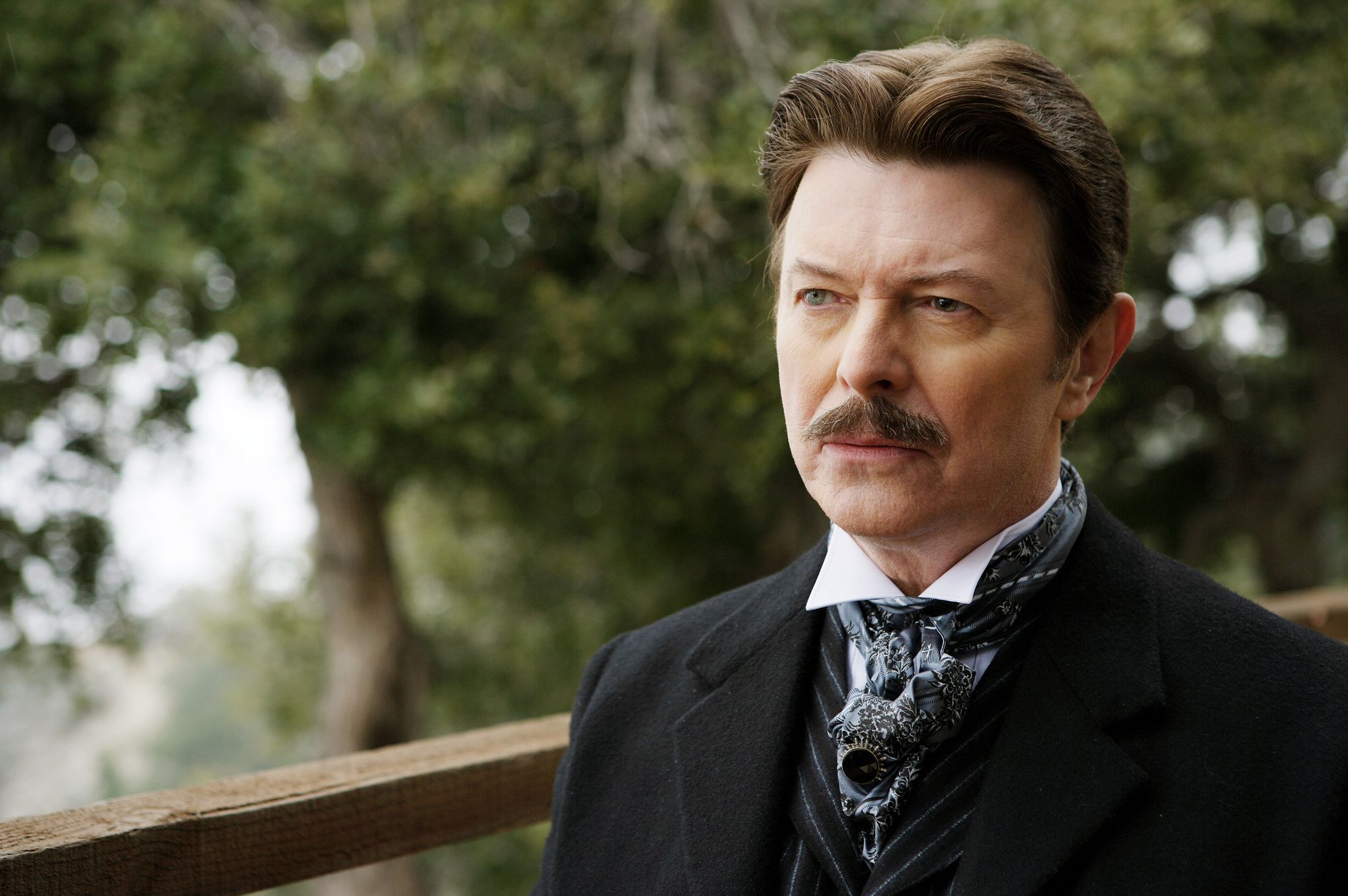
David Bowie playing Nikola Tesla in Christoper Nolan's 2006 movie The Prestige © Warner Brothers
A mystique continues to surround him, not least because many of his wondrous ideas remain unrealised. Nikola Tesla has been portrayed in film by Nicholas Hoult and David Bowie (the latter, famously, in Christopher Nolan's The Prestige). The national airport in Belgrade, Serbia is named after him, as is Serbia's largest power plant. In Croatia, over 130 streets are named after Nikola Tesla.
Meet HGSS The Croatian Mountain Rescue Service
August 19, 2020 – All weather, all terrain, all year round – meet HGSS The Croatian Mountain Rescue Service, amazing volunteers who will never let you down
They're never far from the news. For the last two weeks, members of HGSS The Croatian Mountain Rescue Service have yet again been on the TV news every night. They're leading the search for a summertime visitor, a Polish hiker missing on Biokovo mountain.
But, watch again this winter and, for sure, they'll be in the headlines once more. Whether, they're scaling mountain ranges in the unbearable heat of high summer, searching underwater caves, flooded rivers or the sea, breaking through wild forest or trudging through metres of snow, they undertake their search and rescue missions over every terrain, in every weather condition, in every month of the year, all across Croatia. And, they all volunteers.
Marc Rowlands meets the head of service for HGSS The Croatian Mountain Rescue Service and three of its volunteers to find out who they are and what makes them do what they do.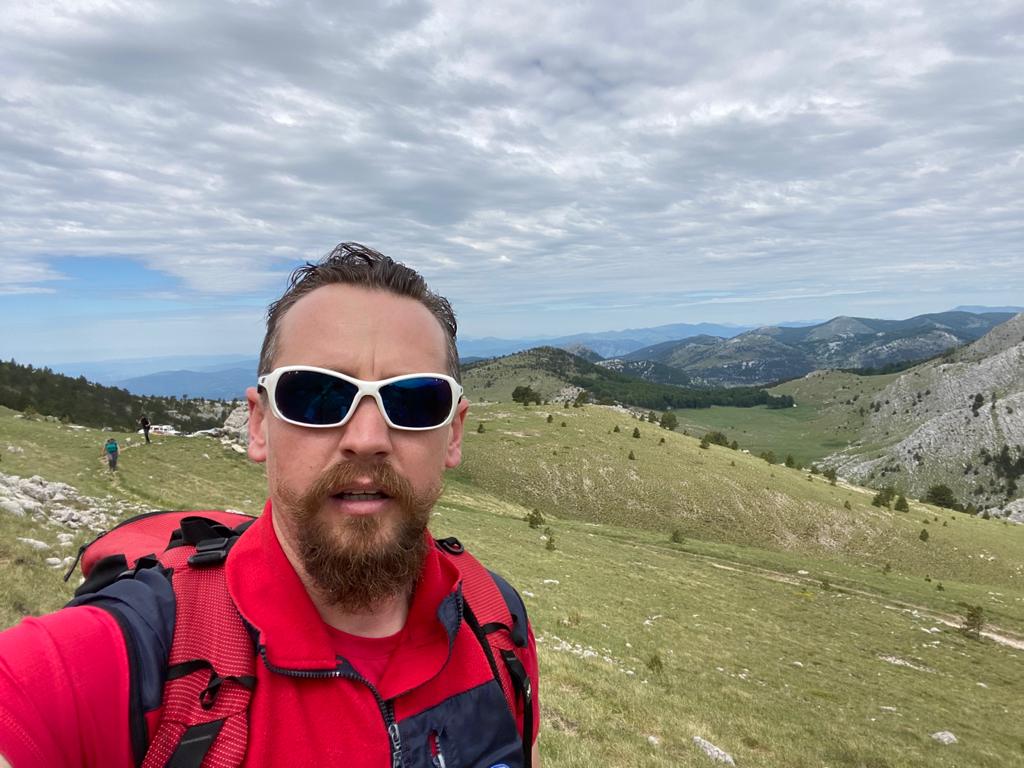
Josip Granić, head of service for HGSS The Croatian Mountain Rescue Service
My name is Josip Granić. I'm the Head Of Service for HGSS The Croatian Mountain Rescue Service. We've had an extremely busy couple of weeks. Being head of service for an organisation like this under such circumstances means you're always on the phone; co-ordinating, talking to outside organisations, members of the press. Communication. It's a 24/7 job, 365 days a year. If people need help, you can't take a holiday. Not at this level of the organisation.
We have around 1000 members. There are 11 paid positions in the main organisation and 25 people we pay to run the administration in each of the teams or stations we have. All of the members who perform the search and rescue are volunteers. We have pilots, surgeons, nurses, students, professors, every part of society.
I'm originally from Kaštela, but my home station is in Karlovac. I've been there for 15 years. I've been Head Of Service for two. Since I assumed the position, I've spent most of my time in the car. I travel all over Croatia.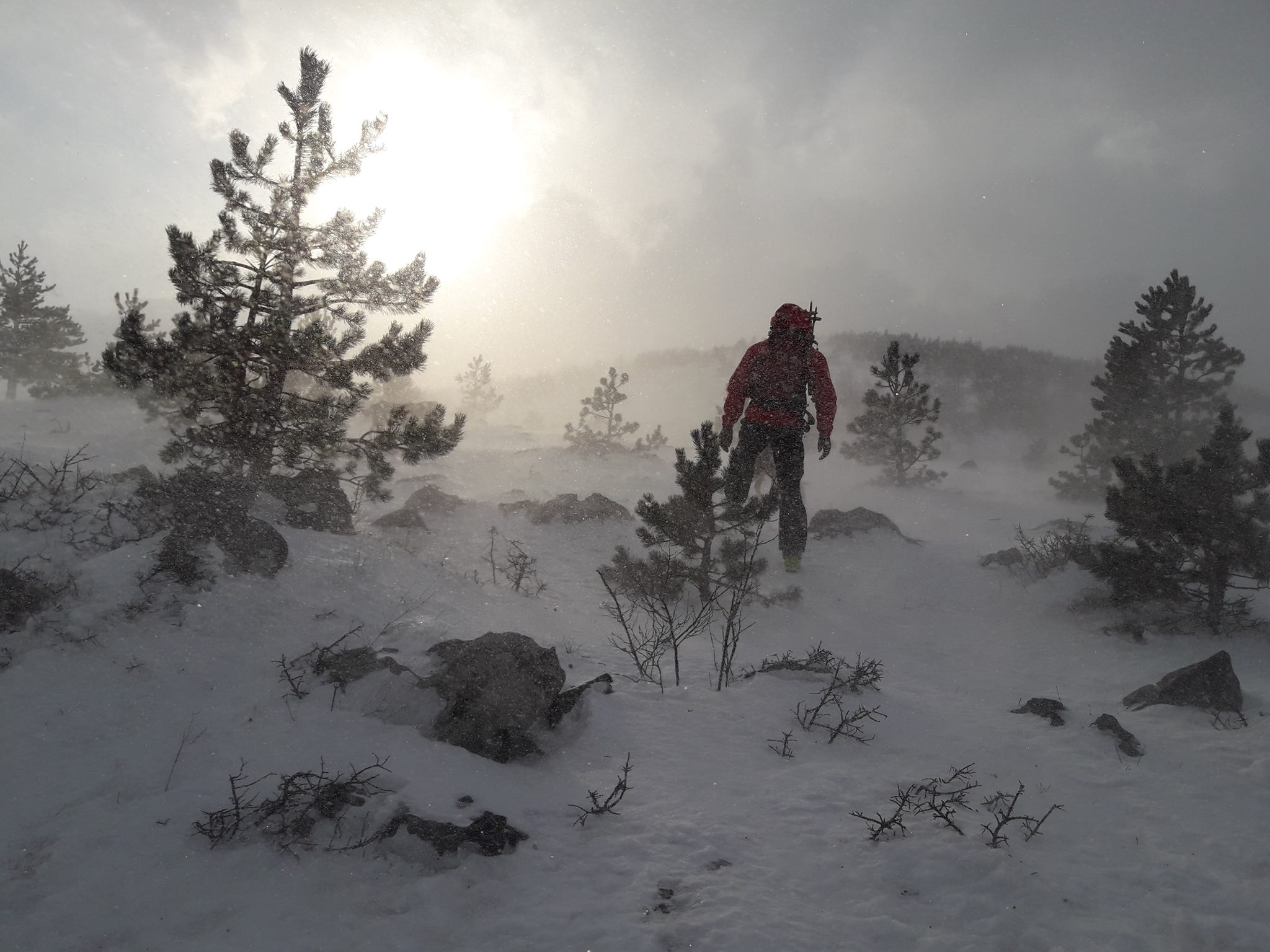
HGSS The Croatian Mountain Rescue Service missions can be hampered by extreme weather conditions © HGSS The Croatian Mountain Rescue Service
To get a certified position as a mountain rescuer in Croatia you all do the same training. It doesn't matter if you come from Slavonia, Dalmatia or Istria, you must have the knowledge and ability to deal with circumstances in any terrain; caves, pits, mountains, on snow, underwater.
Depending on where your station is, the type of call-outs you get could be very different. In Slavonia, 90% are for missing persons - searching forests, rivers, and in floods. We've had a big search on Biokovo mountain for the past 16 days. The stations from Split, Makarska, and Dubrovnik were at first involved, then teams from all over Croatia. It's not the same as Slavonia. The terrain is very different, so you have to be good at a particular set of skills. But, the largest percentage of call-outs is still missing persons. It's 70% of our work nationwide. The other 30% are rescues.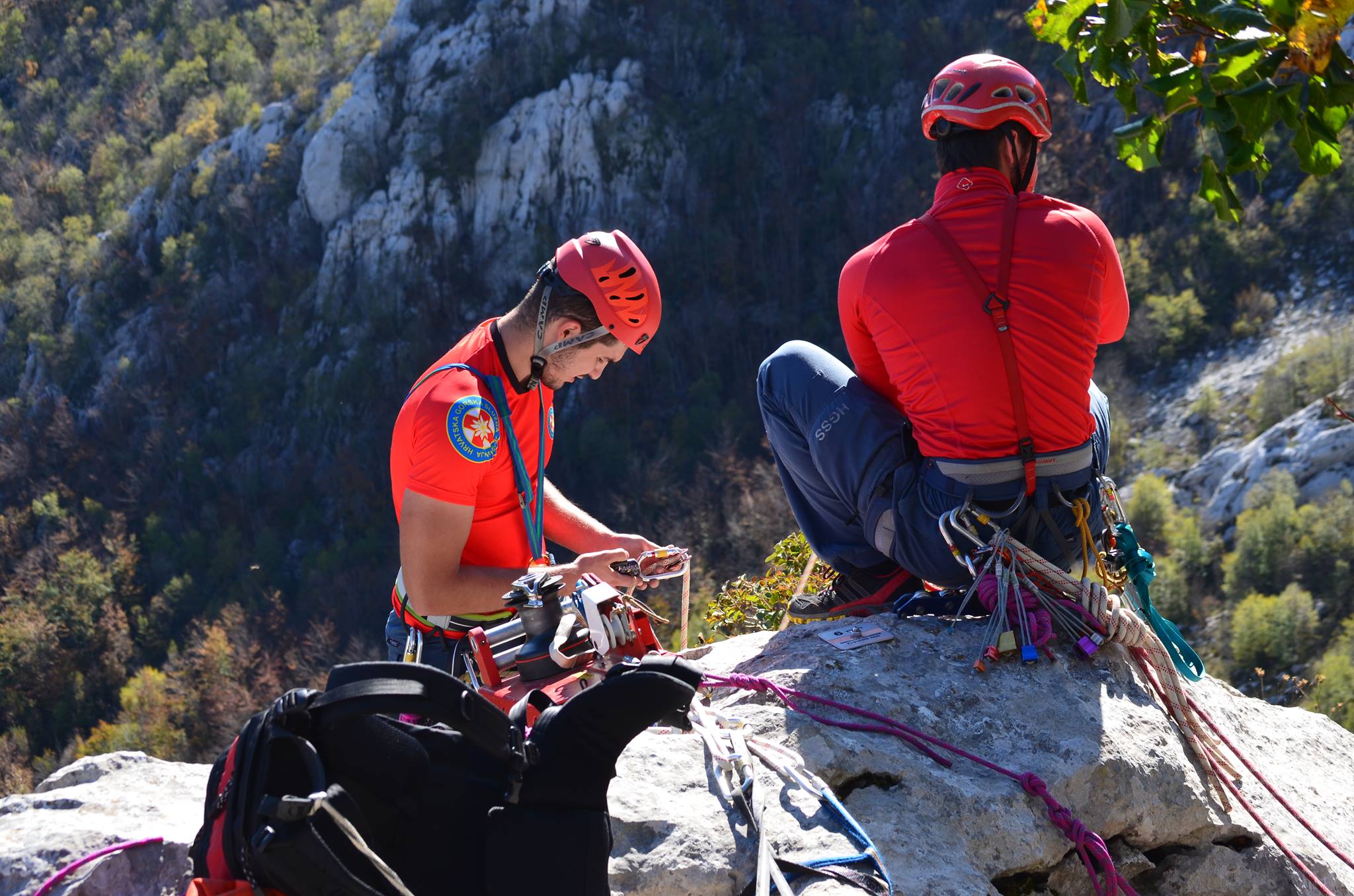
HGSS volunteers are educated to use a wide range of technical equipment. They are trained to operate in all the different kinds of terrain found across Croatia © HGSS The Croatian Mountain Rescue Service
There are usually 800 – 1000 missions a year across the country. We get roughly the same amount of calls in colder months as in warmer months. Only, winter months can be busier. The terrain is more difficult. There are some villages in Croatia – usually where the front line of the fighting was, around Karlovac, Kordun, Lika – and when it snows, it can be almost impossible to reach those places. But, some older people still live there. It can take days to reach them on snowmobiles, then skis, to deliver food or medecine. The other busiest places in winter are the ski resorts - Platak, behind Rijeka, and in Zagreb, on Sljeme. There are teams stationed in those places throughout the snow season.
What's the greatest danger of the job? Almost everything. Nothing in this job is easy. The greatest dangers we face are the same facing those that we rescue - underestimating the environment, nature, the conditions. That's where our training comes in.
In mountain rescue, we separate dangers into subjective, objective and technical. Subjective is the stuff you're guilty of - lack of preparedness, knowledge or equipment. Objective dangers are the ones you can't control, like sudden changes in weather, or avalanche. If you're sensible and informed, there should be no objective danger.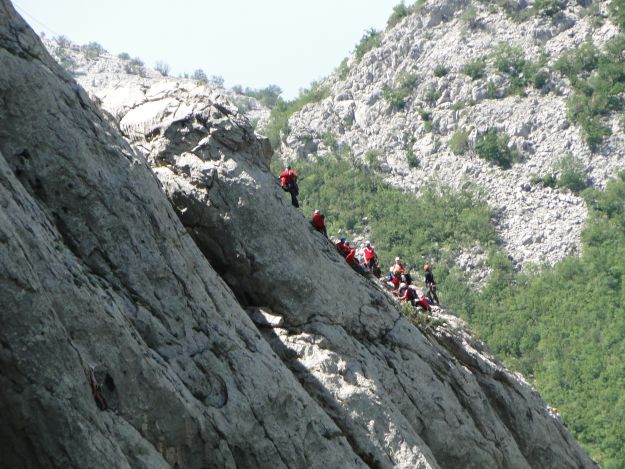
HGSS on a mission, clinging to a steep incline in Paklenica © HGSS The Croatian Mountain Rescue Service "People need to be aware at all times on the mountains. By the time most people think they may be in trouble, they've usually been in trouble for five or ten minutes already" Josip Granić.
80 – 85% of the people we rescue are Croatian. Only 15 – 20% are guests. People from Czech Republic, Slovakia, Poland, (Austria and Slovenia too) tend to enjoy nature more. They like hiking. That's the reason there are typically more rescues for those nationalities than there are for British, Belgian, French, Italian, America, Canadian or Australian guests. I don't remember the specific year, but sometime between 15 and 20 years ago we had a season where 5 or 6 Czech nationals were being searched for or, sadly, turned up dead. The media covered it and ever since there's been this myth that all the people who get into difficulty are Czech.
The question about expensive helicopter rides - why don't you charge the people you rescue - has been here forever. It's like this - if you're a tourist and you have a car accident in Croatia, the fire service, police and an ambulance will come. You won't get charged. We are a tourist country. According to international agreements, we are obliged to make everything safe for residents and guests alike. We are here, just like the fire service and police, to do our part. The Croatian air force is responsible for the helicopter rides and I have to give credit to them - they are crazy good pilots. Amazing. Even if we did charge everyone we saved - and most of the 85% of Croatians we save would struggle to pay - it still wouldn't be anywhere near the money required to run this service.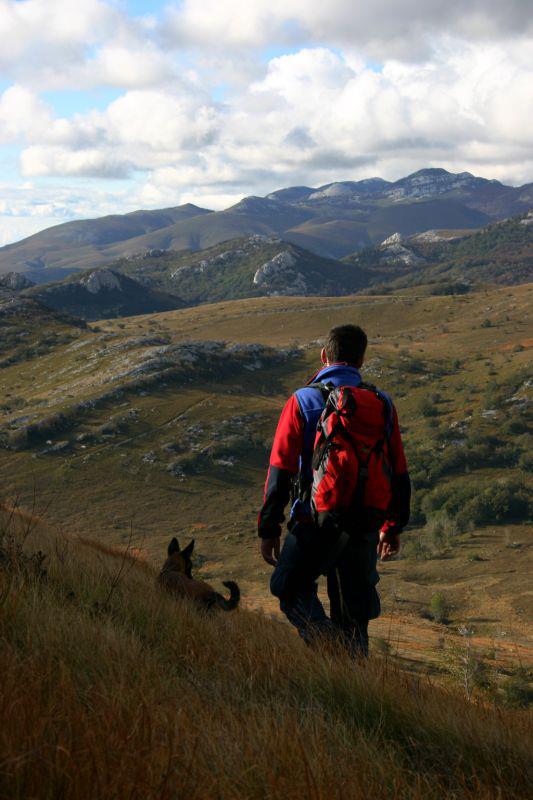
The Croatian Mountain Rescue Service used specially trained dogs on their searches © HGSS The Croatian Mountain Rescue Service
In 2007, I got a new search dog. It came from the Ogwen Valley Mountain Rescue service in North Wales. We cooperate a lot. We were sent out on a job to look for a three-year-old male child who had gone missing near Požega at the beginning of January, wintertime. His grandma was watching him and they were in a house on the edge of the woods. Early in the morning, he was playing with a dog. It suddenly ran into the forest and the boy chased after him. The grandmother didn't see it happen. I found him using my new dog, just after 8 o'clock the next morning. He'd been alone in the freezing forest for almost 20 hours.
Time is really moving fast on a job like that, because it's a kid and because it's so cold. Survival rates in such conditions are not good after 24 hours. When I found him, saw that he was alive, those big eyes looking up at me, it's a crazy feeling. You can't describe it. You can't compare it. A lot of positive emotions.
Every mission is special. We meet them all with the same level of determination and professionalism. But, it's the ones where you know you've really saved someone that stand out in the memory. Not the broken leg, where you transported someone – sure, that's an excellent job. But, when you know you've saved someone's life, that they definitely wouldn't be here now if it weren't for you, that's what makes it all worthwhile.
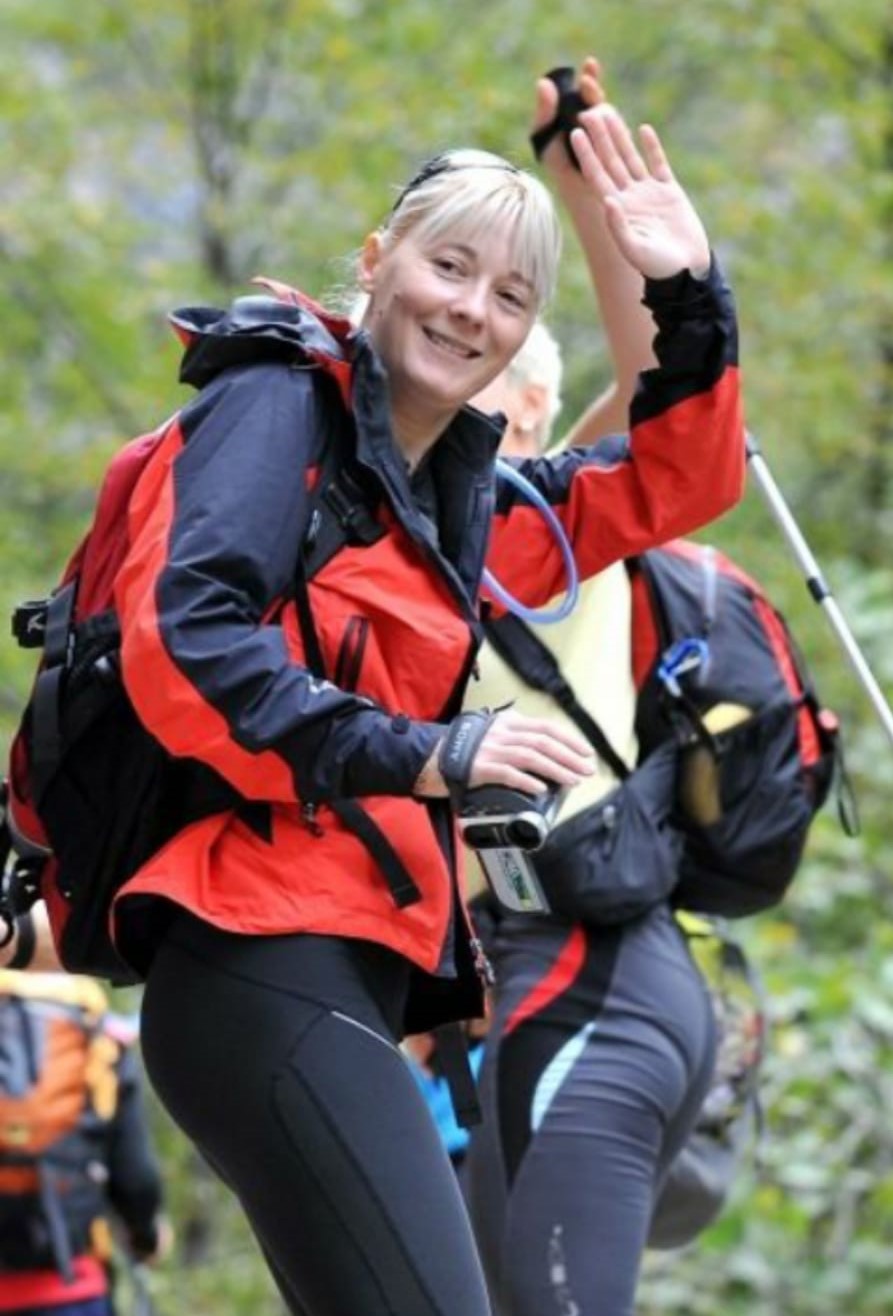
Jana Mijailović, volunteer for HGSS The Croatian Mountain Rescue Service
My name is Jana Mijailović, I'm 48 years old and I'm from Zadar. I finished school to be a teacher, but I never did it. My husband and I run a company that does plastic and aluminium windows for houses.
I started to go into the mountains when I was at high school. I never had the ambition to be part of mountain rescue services – people just noticed me on the mountains. They said I'd be good at it and asked me to join. I met my husband on the mountains. We are both volunteers for HGSS The Croatian Mountain Rescue Service. I've been doing it for 16 years.
I was a member of the first and second all-female Croatian expeditions to the Himalayas. We first climbed Cho Oyu in 2007, then Mount Everest in 2009. Croatia is the only country in the world that has only one successful male climber of Mount Everest, but four successful female climbers. I sometimes work as a guide too. I guess you could say I'm all about the mountains.
Being a climber, an Alpinist, I know that if I get into trouble, it's only my HGSS colleagues who can help. I feel this instinctively. I cannot be in the house, safe and warm, knowing that maybe someone needs help that only I can provide.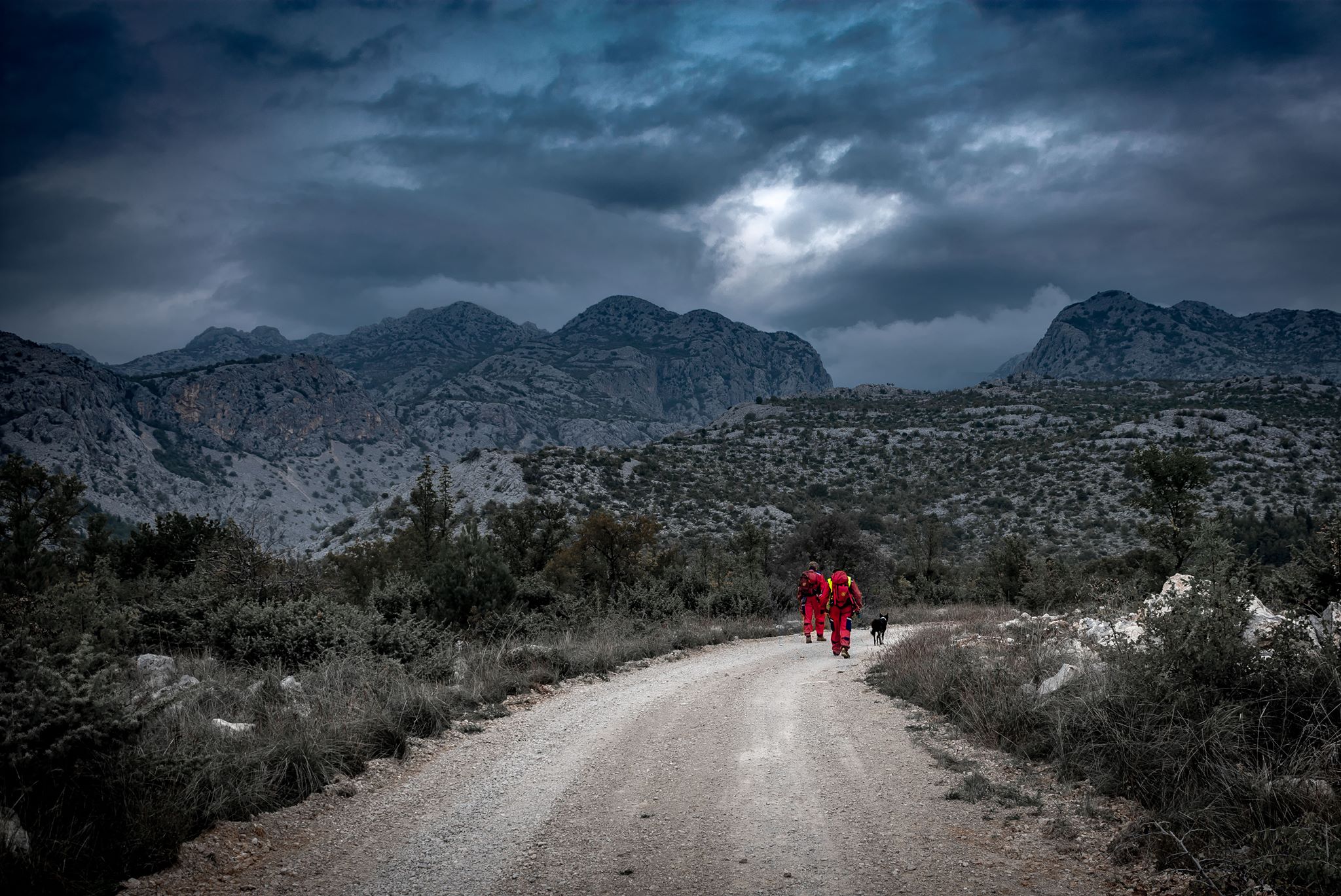
HGSS The Croatian Mountain Rescue Service members entering Paklenica under foreboding skies © HGSS The Croatian Mountain Rescue Service
I've really been on so many expeditions with HGSS. My station are on duty in the season at National Park Paklenica and I'm now the coordinator. Climbers from all around the world come and so there are many interventions. None of them are easy because the terrain is incredibly difficult. You really have to be in shape and know the techniques inside out.
I'm very proud of my statistics. Everyone I've rescued, who was alive when I reached them, is still living today. Unfortunately, not everyone we reach is alive when we arrive.
I remember one time, my husband and I were having dinner. We were arguing about the techniques and knots for moving a stretcher down a vertical climb. The training is so intense, you really have to know it well, and I guess that's just the kind of people that we are, that we would be arguing about it in our free time. Ha! He told me, "Why do you care? You'll never have to do that," because usually, it's really strong guys who do that specific job. If you're on a 400-metre-high section of rock, it really takes a lot of muscle.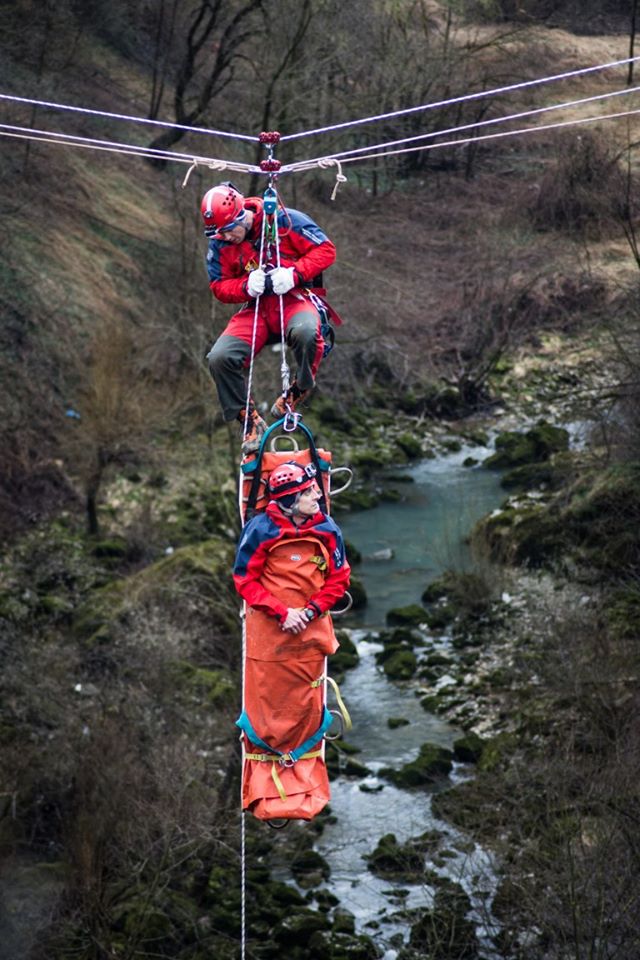
Ascending from a valley floor or descending from a mountain peak with a stretcher is a technically difficult operation, often hindered by darkness and adverse weather conditions. It requires a lot of training and a lot of muscle © HGSS The Croatian Mountain Rescue Service
In the evening, just two days later, we were called out to rescue an Italian guy who broke his leg on Anića Kuk. It's a really mighty part of the stone. And the leader of the expedition asked me to go on the stretcher. They pull you down on the ropes and you have to push very hard to keep the stretcher, the person you're carrying and yourself away from the rock, while balancing the weight of all three. It was dark, raining and with lots of Bura, the incredibly strong wind that sometimes hits us. That's probably my most memorable rescue.
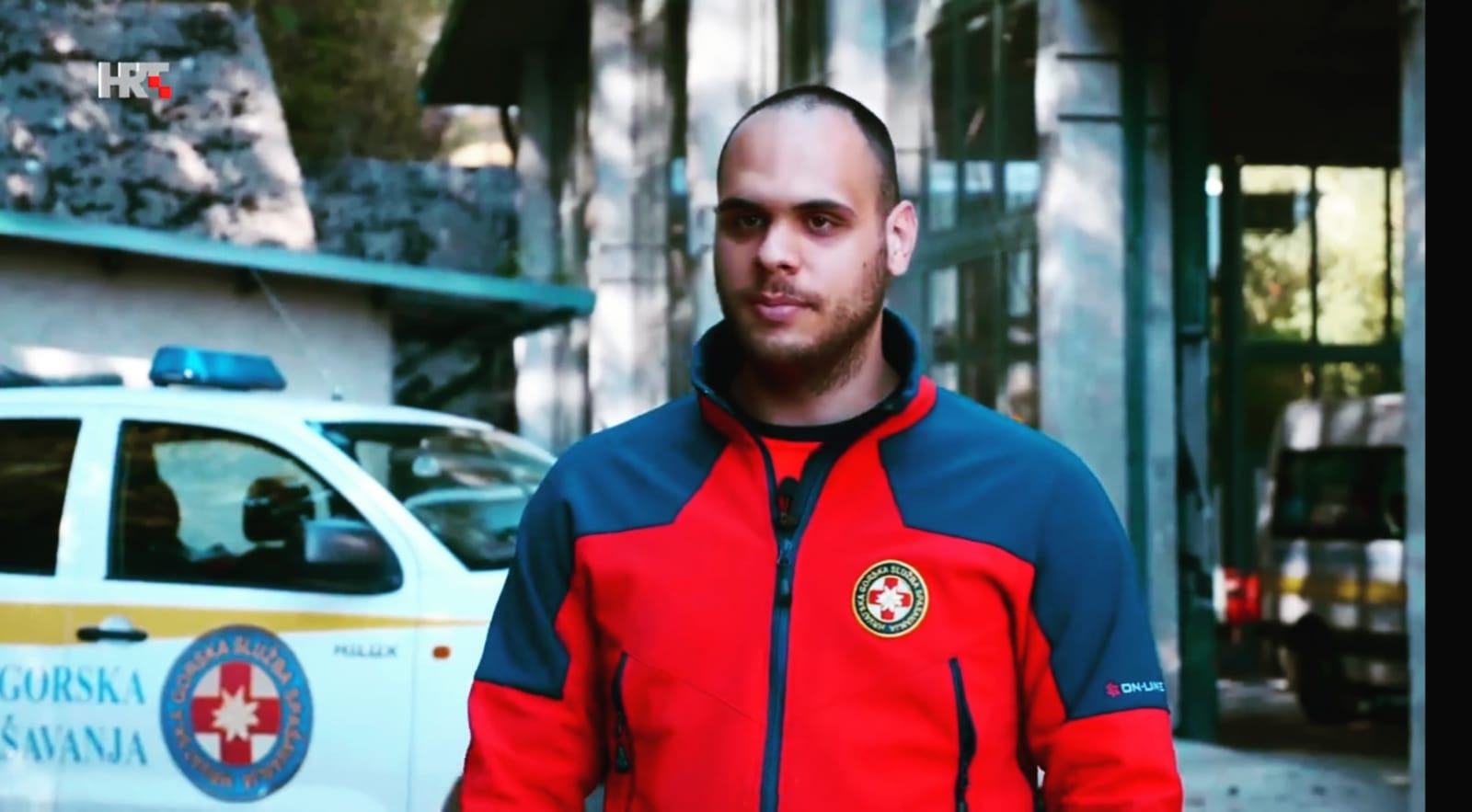
Petar Prpić, firefighter and volunteer for HGSS The Croatian Mountain Rescue Service
My name is Petar Prpić, I'm 25 years old and I'm from Hrvatska Kostajnica, just on the Croatian-Bosnian border. My station is in Novska. In my full-time job I'm a professional firefighter. I guess I have two dangerous jobs. Well, one job and one hobby.
I've always been interested in the outdoors – mountaineering, hiking, canoeing. But, that's not why I joined HGSS The Croatian Mountain Rescue Service. I just wanted to help people. I don't know, I guess it's just something in me.
We have a lot of rivers in our area. During the times of flood, we get a lot of call-outs. Our part of the country has a high percentage of elderly people in the population. A lot of them live in small villages, on the edge of the forest. We get a lot of call-outs for searches. Especially in the autumn when people go out looking for chestnuts or mushrooms. But, like all the stations in Croatia, we are here year-round if there are any actions in other parts of the country that need us.
In some areas, HGSS The Croatian Mountain Rescue Service are frequently called out in response to flooding. This picture shows HGSS members on operation during the 2014 floods. In that year, flooding across the whole region was so bad that HGSS members operated not only in Croatia, but also donated their services to neighbouring Bosnia and Serbia © HGSS The Croatian Mountain Rescue Service
I was just on the search in Biokovo. The head of service called me and asked me to go. I first had to get some free days from my job. I called my boss, Zvonimir Ljubičić, chief of the fire department. He's great, very understanding, and he gave me permission. Two years ago I was called to Rab. Very hard operation, very difficult terrain.
Late last summer, we were called out to look for an older man near Glina. It was around 11 o'clock in the evening. He'd gone to look for mushrooms in the afternoon and never came back. Police were there and they sent for us.
The man had a cell phone on him, but there was no signal. There was no location given off the phone. We were a team of four, split into two teams. We went up into the woods above Glina and concentrated our search on areas where we could see there was no telephone signal on our phones. We were yelling in the dark. After an hour of search, someone answered. He'd been missing since 2pm. We found him at 2am. He was just lying there, uninjured but unwell, unable to move.
The reason it sticks in my mind is that the next day, in the morning, his daughter called me. She was so thankful, so emotional. For sure we saved his life. None of the other emergency services who were present could find him. It was down to us. We finished the operation at about 6am and then all four of us had to go immediately to our regular jobs.
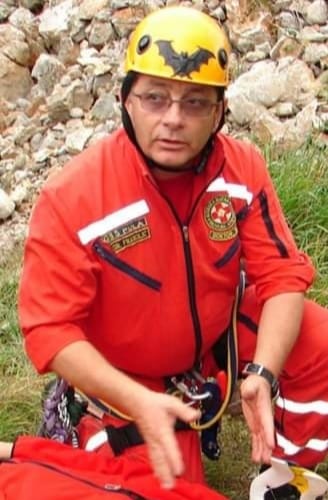
Mario Franolić, physician, ex-commando and volunteer for HGSS The Croatian Mountain Rescue Service
My name is Mario Franolić and I'm 60 years old. I'm the chief of the mountain rescue service in Istria. I travel throughout Croatia because I'm also an instructor for the medical commission of HGSS. I was born on island Krk. I'm based in Pula although I work in Rijeka. I travel a lot between the two. I've been with HGSS The Croatian Mountain Rescue Service for 18 years.
In my day job, I'm a physician. I am a senior mentor at the Institute for Underwater and Hyperbaric Medecine in the Clinical Hospital Rijeka. I'm an expert in my field of emergency medecine. I've been doing it for almost 30 years.
When I was young, I trained to be a physician in Belgrade. It was then the best medical faculty in Yugoslavia. At the same time, I also started spelunking (cave exploration). I've been doing it since 1978. Later, I was a physician in the military underwater commando unit. I lived in Austria for five years, but when I came to Pula, they were just starting the HGSS The Croatian Mountain Rescue Service station here. They asked me for help because they didn't have any medical professional on the team. I accepted. It would be a waste not to use all these skills I have.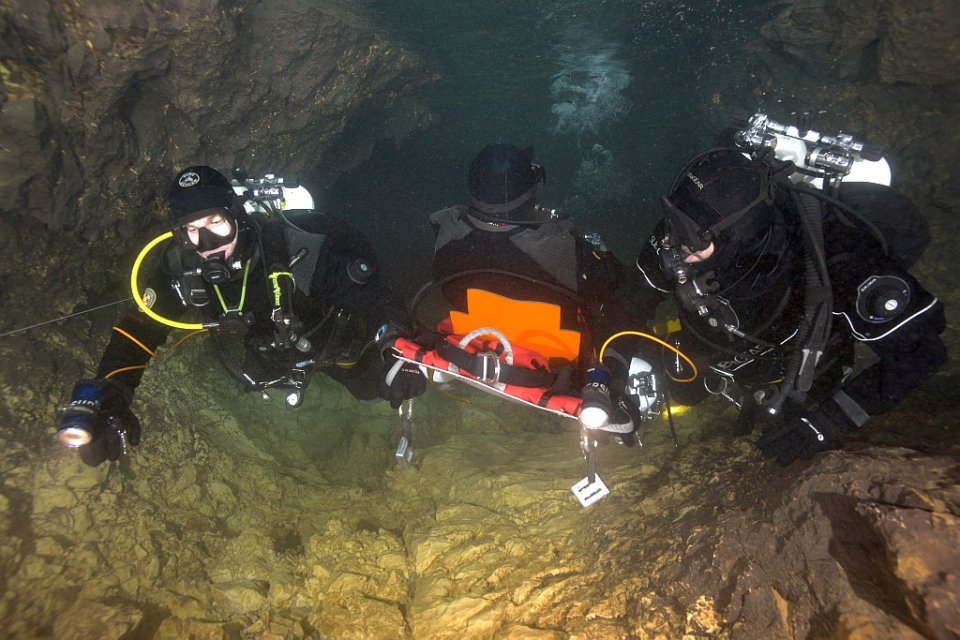
Specialist teams from HGSS are trained in underwater rescue from caves. Such caves exist all over Croatia in the karst rock, and also on some islands © HGSS The Croatian Mountain Rescue Service
Sometimes, our status as volunteers can give us problems. Although we have official duties, we are more like an NGO than something like the police. There can be legal implications. I remember one situation, very acute because a paraglider fell from the sky. None of his colleagues saw him fall. Paragliders go into the air together, but then they each branch off to do their own thing.
We had no idea about the location. We started from the last point of sighting, knowing that it could be very far from the place where he actually fell. But, we had to start somewhere. We had one mobile phone signal direction. But, you need three in order to locate someone. We only had a line on the map.
In the past, HGSS The Croatian Mountain Rescue Service sometimes had difficulties because the telephone companies wouldn't give us the information we needed in order to triangulate the position of a missing person. They would only give it to the police. But, it's a race against time. We searched for this man all day and all night. In the morning, some Croatian paragliders made private contact with a guy from the phone company. They begged him to release the information we needed. Although he could lose his job, giving such information to private citizens, he did it.
We found the man about 150 metres from where we were. Sadly, he was already dead. It was very small comfort to see that he had died instantly, on impact. It's unbearable when you reach someone you could have saved if only you had got there quicker, especially in an instance such as this, where we were hindered by a lack of information that was available. I think it moves more quickly now, but still we have to go through the police.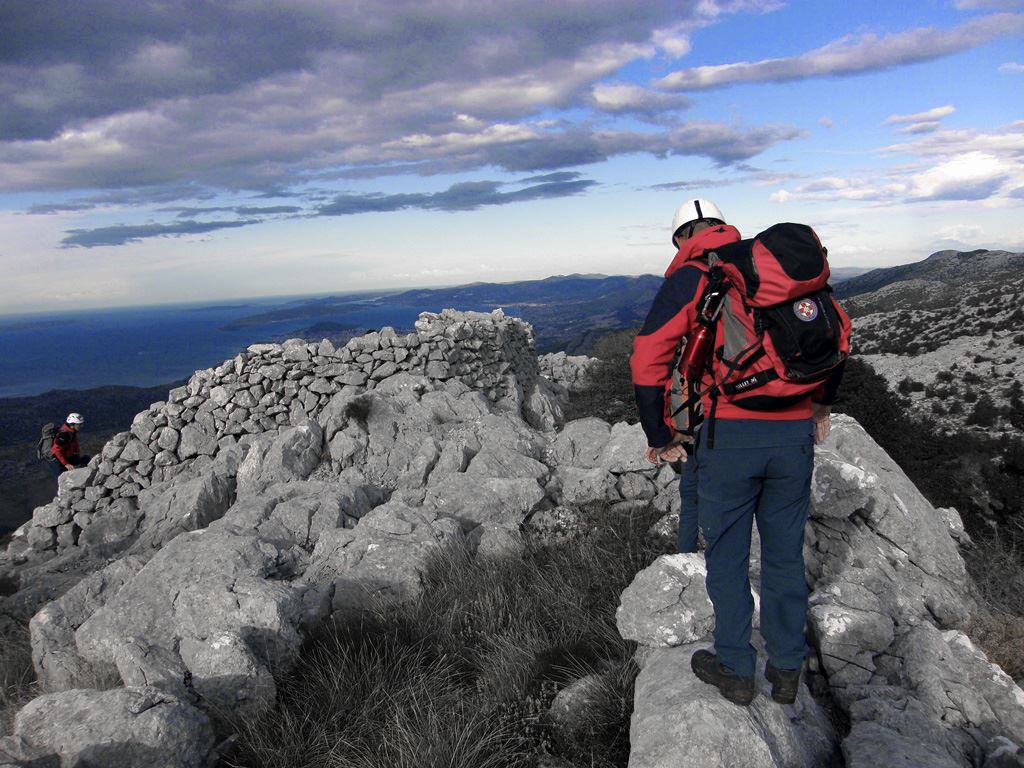
© HGSS The Croatian Mountain Rescue Service
One of the most emotional operations I went on was around five years ago, the rescue of a young girl - maybe two and a half to three years old – who got lost in the woods in a small place in central Istria. She chased into the forest after some dogs around 10 or 11 in the morning. The family saw immediately that she had disappeared and started to search. About two hours later, we were called out. It was impossible for the family to find her.
About 300 people came – my station, the Rijeka station, hunters, firemen, police and volunteers. In such an operation, the police are the lead service. But, 99% of the time they leave the organisation of the search to HGSS The Croatian Mountain Rescue Service. We are the only organisation who is very well educated in organising searches. When other people do searches, they use intuition. But, people all have different intuition. It can be chaotic. We are highly trained for this. There are procedures, recognised internationally, that we follow. We found her early in the morning, at around 7 o'clock. The dogs were lying on each side of her, giving her warmth.
All photos courtesy volunteers and HGSS The Croatian Mountain Rescue Service
Paths Following Footsteps of Wolves, Lynxes and Bears Opened Near Plitvice
As Poslovni Dnevnik writes on the 31st of July, 2020, many tourists visiting the much loved Plitvice area have a brand new, very interesting tourist attraction at their disposal - the ability to hike along trails that follow the footsteps of wolves, bears and lynxes.
This area is rich in both flora and fauna, and by tracing the footsteps of animals, visitors will be able to get a unique insight into the activities of Lika's large wild animals.
This is a protected area managed by the Barac Caves Public Institution, and in addition to adventurers and animal lovers, this offer will certainly be interesting to walkers, recreationists, nature lovers and Nordic walkers.
"Back when we initially came to this idea and began with the arrangement of the trails, we had the visitors to Barac's caves in mind, to whom we offer additional, very attractive things to do before or after the tour of the cave itself. Going deep into the forest and following in the footsteps of wild animals is something that you will definitely remember for the rest of your life and that will connect you with nature forever,'' says director Tihana Ostrina.
The trails close to Plitvice are circular in shape, with a total length spanning 11.5 kilometres, with markings in the shape of paws, they are additionally marked with signposts at important intersections, and the start and finish is at the Barac caves picnic area.
The wolf trail is the shortest and the tour takes only twenty minutes to walk, so it is also suitable for novice walkers. Wolves, as well as humans, like to move in their "pack", and to trace this path it was necessary to follow the wolves who live in the area very closely.
The lynx trail is three kilometres long and follows in the footsteps of the Eurasian lynx, which is an endangered mammal species in Croatia. Large areas are needed and used for lynxes, and in that sense it is one of the most demanding and challenging species for conservation, and its presence is a sign of excellent preservation of the ecosystem. The movement of lynxes was recorded in the area of Barac's caves, and visitors to the new trail near Plitvice can discover the uniqueness of the forest ecosystem in which the lynx finds his occasional refuge.
The bear trail is designed for eager walkers who like a challenge and who have at least three hours at their disposal, as it is 7.5 kilometres long. The trail follows in the footsteps of the gorgeous brown bear, the giant of Croatia's mountain forests, the trail also hides some of the most beautiful lookouts and even naturally occurring refreshments from several forest springs and streams.
The new trails located close to the much loved Plitvice area of Lika pass through a larger complex of mixed forest that offers a home to a large number of plant and animal species. They also stretch over dry and semi-dry grasslands that represent important habitats for many rare and endangered plant and animal species. Due to the unfortunate abandonment of the traditional way of management, many mountain grasslands are disappearing due to the gradual overgrowing of woody and shrub species from nearby forests and are among the most endangered ecosystems in Croatia.
Visitors are invited to choose the trail according to their physical fitness level, to bring adequate footwear and clothing, and follow in the footsteps of some of Croatia's most majestic large animals.
For more, follow our travel page.
High-Speed Internet Access for Lika as Valuable Project for Region Approved
Lika is set to get a cash injection worth almost 100 million kuna which will see it have the proper access to a high-speed Internet network, which is something Croatia's ''green heart'' has been lacking.
As Poslovni Dnevnik writes on the 3rd of July, 2020, Gospić, Otočac and the much loved and heavily frequented Plitvice Lakes have had important funds approved for them for the implementation of the Broadband Internet Infrastructure Development Project which is worth almost one hundred million kuna in total.
Gospić, as the project holder, along with the City of Otočac and the Municipality of Plitvice Lakes which is participating in the project, was approved financial resources in the maximum amount of 75 million kuna for the implementation of the Broadband Internet Infrastructure Development Project for Gospić (PRŠI), a project which is worth 98 million as a whole.
With the implementation of this extremely important project for this region of Croatia, every picturesque little village and hamlet in these areas of Lika will have the proper access to a high-speed Internet network.
This is very important news for the growing tourism sector in Lika, which has recently been being discovered by foreign tourists more and more, because the poor Internet network was what guests often complained about, and the implementation of high-speed broadband access will greatly contribute to improving the quality of Lika's economic development in general.
The project, which started back in July 2017, includes the implementation of the next generation fixed broadband access network (NGA) with a speed of 100 Mbit/s in all settlements of Gospić, Otočac and the Plitvice Lakes area where high-speed broadband access services are currently not available. More specifically, this refers to areas where operators otherwise don't plan to invest in next-generation fixed broadband access networks over the next three years.
This is one of the most financially valuable European Union-funded projects in the Gospić to take place, and Gospić is the first area in Lika-Senj County to actually start implementing the project.
For more, follow our lifestyle page.
Croatia's Green Heart: Explore Beautiful Lika for Less Until September
Unfortunately, Lika continues to be a part of Croatia that most only get to see when driving through it, either from Zagreb down to the coast or back again. This gorgeous part of the country is lush and green, full of rolling hills and picturesque little towns and villages and even more history and nature.
Known for much more than just Lika potatoes and lamb (although they're both entirely worthy of their fame), Croatia's green heart has never particularly been associated with tourism, which is dominated by the coast, until somewhat recently. With the coronavirus pandemic having forced us into a ''new normal'' in which Croatia's strongest economic branch, tourism, is suffering, why not explore Lika for less?
As Lucija Spiljak/Poslovni Dnevnik writes on the 8th of June, 2020, more than half of the territory of Lika is located in the ecological protected network of EU Natura 2000.
This gorgeous part of Croatia and its numerous attractions will be even more accessible to visitors until the end of September this year, with benefits they can take advantage of by presenting a ticket for the famous Plitvice Lakes National Park.
They announced this from the national park itself and stated that kayaking on the Gacka river will be 35 percent cheaper, the cost of electric bike rental around Plitvice Lakes will be slashed by 30 percent, the price of quad safaris through the Gacka Valley and Velebit will be cut by 25 percent, there will be a 15 percent discount on the use of zip lines, and much more.
As the director of the Plitvice Lakes National Park, Tomislav Kovacevic, explained, this is all part of the destination project called Plitvice Experience in Lika, within the scope of which they decided to combine numerous opportunities for active tourism, and Kovacevic referred to the initiative as ''one of the best tourist-cultural-landscape-historical adventures in the Republic of Croatia''.
In addition to kayaking, rowing, exploring the flora and fauna of beautiful Lika and quad biking through the Gacka Valley and Velebit, a tour of the airplane museum and much more will be organised.
As previously touched on, more than half of the territory of Lika is located in the ecological protected network of EU Natura 2000, which unites the national parks of Plitvice Lakes, Northern Velebit and Paklenica, the Velebit Nature Park and many more stunning areas in Lika within a special biosphere reserve, along with its wild variety of natural phenomena.
The move rightfully brands Lika as a destination full of protected areas, where more than fifty species of different (medicinal) plants grow freely, and Lika food products are labelled as being of Lika quality.
For more, follow our travel page.
Lika Destination Cluster Launches New Campaign: Stay Home, Plan a Holiday to Lika
April 5, 2020 - The Lika Destination Cluster wants you to stay at home now so you can enjoy the region later.
March, when spring travel or defining details for summer holidays usually takes place, has suddenly turned into the toughest month, much like all of this year.
The coronavirus pandemic currently affects all sectors of business and the livelihoods of people around the world, especially in the tourism sector.
Just because there is no tourist activity now does not mean that you should stop communicating on social networks. The focus should be on daydreaming, exploring, and planning your travel for later on.
Thus, HRTurizam reports that the most active tourist cluster in Croatia, the Lika Destination Cluster, is sending a message to all travelers: Stay home and plan a vacation to the Lika destination.
"We believe that when all this is over, the desire to discover new magical places will be greater than ever, and thus the experiences will be even more valuable. Excess free time is well-used for travel planning, and Lika is an indispensable dream vacation that offers a unique blend of land and sea where you have the opportunity to change as many as three climates and experience a unique contrast phenomenon,” the Lika Destination Cluster points out.
Lika Destination points out that the region is abundant in natural phenomena at all levels of protection, and as much as 60% of the Lika area is located in the NATURA 2000 ecological network and is extremely attractive for all forms of green tourism. ”In Lika, there are three of eight Croatian national parks (Plitvice Lakes, Paklenica and Northern Velebit) worth visiting at any time of the year. The destination also houses the birthplace of Nikola Tesla, the birthplace of Dr. Ante Starcevic, Europe's first printing press, and rich cultural heritage. Also, it is definitely recommended to visit protected natural areas,” the Cluster points out.
In addition to the natural resources, Lika has also been developing content for an active holiday from adrenaline activities such as ziplines, horseback riding, buggy rides, kayaking, and hiking.
When talking about Lika, we should definitely emphasize the authentic gastronomic offer, and especially the gastronomic delicacies with local ingredients from Lika Quality.
Currently, there are 169 products in the system from 59 manufacturers from the Lika area, which covers the area of Lika-Senj, Zadar and Karlovac counties.
Products under the Lika Quality label are available at the Lika Quality product point of sale at Plitvice Lakes National Park, where small local producers for the first time had the opportunity to sell their products under a common brand in one of the most visited places in Croatia. Soon the products will also be on sale in the Northern Velebit National Park, Paklenica National Park, and Velebit National Park and other protected areas in Lika.
"You can already dream of being warmed by the sun as you stroll through the Velebit meadows, feel the water drops from the powerful waterfalls of Plitvice Lakes and enjoy the flavors of traditional Lika dishes," concluded the Lika Destination Cluster.
Although the Cluster does not yet have its own webshop, they have joined the Facebook group Likca Placa where you can find information on products and manufacturers from Lika Destination, among which are manufacturers whose products bear the Lika Quality label.
Lika is a destination, and within the Lika Cluster, the destinations within the region are actively working on a variety of promotional activities, from a joint Lika destination ticket to 3 and 7-day ready-made tourist arrangements.
To read more about travel in Croatia, follow TCN's dedicated page.
96 Partners Included in Lika Integrated Quality Management Project
February 2, 2020 - Last year, the implementation of the IQM Destination Lika or Lika Integrated Quality Management project began, aiming to improve the overall quality of the destination by connecting the entities in the destination to provide the best service to the guests.
HRTurizam reports that in 2019, Lika gathered as many as 96 partners from 7 categories (attractions, hotels, caterers, camps, local products, private accommodation and travel agencies) to join the project. And now it's time for everyone else to get involved.
Due to the great interest of the public, the Lika Destination Cluster, Plitvice Lakes National Park and Feel IQM are inviting all interested tourist entities to contribute to the development and quality of tourism in Lika this year to apply for the project.
All interested parties can submit their applications by Monday, March 2, 2020. You can find out more about the project here.
The project to brand Lika as a unique tourist destination was started in 2015 through the INTEGRA LIKA 2020 project. Through this process, Lika developed a system of regional quality labels for locally produced food, beverages and souvenirs called Lika Quality, which already has 169 certified Lika Quality products in its system, with 62 manufacturers.
The destination of Lika includes the coastal and inland part of the County of Lika-Senj, the Municipality of Gracac in Zadar County and the Municipalities of Rakovica, Saborsko and Plaški in Karlovac County. The project aims to connect the subjects and encourage excellence to improve the overall quality of the destination.
As part of the project, in 2019, a series of educational workshops were held, which will continue in 2020, to encourage mutual networking, synergy and raising the quality level of each of the entities involved and the overall tourist product of Lika.
The whole story from beginning to development is more than impressive, especially in the context of development in the underdeveloped tourist area, regardless of the importance of Plitvice Lakes National Park.
The story of the development of the Lika Destination cluster is a great example of how to develop a tourist destination in a quality and sustainable way, using the most EU funds. An excellent positive and concrete case study will be presented at the first conference of the HrTurizam.hr portal - One Day Or Day One, which will be held on 02.04.2020. in Zagreb.
To read more about lifestyle in Croatia, follow TCN's dedicated page.
Production of Lika Products Grows, More EU Protection Coming?
The EU-level protection of škripavac cheese will doubtlessly put a spring back in the step of the sixteen cheese producers who produce this product in Lika-Senj County. As Marta Duic/Poslovni Dnevnik writes on the 3rd of November, 2019, after lamb and potatoes, Lika could soon gain a third EU-protected product - škripavac cheese.
As revealed by Ivana Starčević, who is the head of the Lika Local Action Group (LAG), the initiative was initially launched four years ago by several associations and is being implemented as part of the Integra Lika 2020 project.
"Because there's a market for this type of high-quality product, protection is a logical step in order to raise production to a higher level, price the product and brand this region as an area offering high quality food. The duration of the EU-level procedure will depend on the time it takes to check documentation and any need for adaptation to European Commission requirements,'' explained Starčević.
As she explained, in addition to the mark for sales growth and better placement, promotion and work on recognition of this local product are crucial. According to information obtained from Agrovelebit, the producer of the first Lika product to receive protection at the EU level - Lika potatoes - demand has grown precisely due to publicity and that is currently outstripping supply.
At LAG Lika, they believe that their experience so far will help them position the cheese on both the national and EU markets. In the wider area, this particular type of cheese is produced by sixteen registered cheese makers.
"The marketing of products from here has intensified with the establishment of the Lika Coop Cooperative, which markets domestic products to stores and souvenir shops at Plitvice Lakes National Park and to the Lika Quality certified sales points,'' Starčević stated.
OPG Miškulin from Smiljan, otherwise Nikola Tesla's hometown, produces traditional local cheeses as well as numerous other products from the region.
"Protecting škripavac cheese at the EU level for small traditional producers like us means a lot. With all the investment that we have to increase production and placement, this puts an extra spring in our step. We've acquired new cows from Austria, and thanks to more milk, we have also increased our škripavac production. We've completed the construction of a new barn, and we're planning to apply for the Lika Quality label,'' said Marina Miškulin, the owner of the aforementioned Smiljan-based OPG.
Make sure to follow our dedicated Made in Croatia page for much more.
Gospić and Otočac Join Forces for Walking Festival, Over 1,000 Participants Expected this Year
August 17, 2019 - After a very successful first year, the second Croatian Walking Festival will be held in Lika this September, in the towns of Gospić and Otočac.
This year, the host cities will be Gospic and Otočac, where several routes of different intensities will be walked to ensure everyone can participate. September 7 is thus reserved for Gospić, where all participants will master three trails of different lengths - 10+ 20+ and 30+ kilometers, symbolically called Tesla. One day later, on September 8, the event moves to Otočac for the Gacka trail, which is also 10+ 20+ and 30+ kilometers long. Thus, the Croatian Walking Festival is an interesting and commendable synergy between two towns - Gospić and Otočac, reports Goran Rihelj of HRTurizam.

About five hundred walkers participated in Lika last year, and organizers expect the figure to at least double this year. While these are small numbers, to begin with, the organizers expect about 2,000 overnight stays at this year's edition, which is a more than excellent figure. The festival can surely become an excellent motive for arrivals, and in addition to walking, the tourism segment features the gastronomic offer and tourist facilities Lika has to offer.
Goran Rihelj writes that the Walking Festival is a brilliant example of the desire for positive change; a festival that has found their niche, boldly moved forward, and with a smart development strategy, could grow into a manifestation that attracts thousands of visitors and tourists in three years.
The Walking Festival is a unique sporting event in Croatia, and even after the first year, it has been recognized at the international level. Namely, in May, the Walking Festival began the process of joining the World Walking Federation (IML) and has the status of a candidate. Rihelj writes that this is the best proof that Croatia is following international trends, and the ultimate goal is to gather tens of thousands of walkers like similar events around the world that have been held for many years. Festivals of this kind have become popular with the masses, as walking is an activity that is increasingly gaining importance and professionalism. Because of this, some international festivals gather up to fifty thousand participants.
With global tourism trends that will grow even more, from ecology, organic food, nature, active rest, awareness for health and movement, it is not difficult to see Lika positioned precisely in this segment. Organic and local food from OPGs, nature and fresh air, forests, cycling tourism, walking, active rest and, of course, Tesla and Plitvice Lakes are big tourist magnets. Also, excellent investments in accommodation capacities have already been made in Lika, such as the Fenomen Plitvice, Plitvice Holiday Resort, and Big Bear Camping Resort.
However, Rihellj writes that the success and positive impact of Plitvice Lakes National Park are not enough, as it needs to be smartly managed to become a recognizable brand, with strategic and sustainable development.
Applications for the Walking Festival are open until August 30, and with the registration fee, participants can enjoy a shuttle service between the two cities, as well as official T-shirts, water and fruit. You can find more information here.
To read more about travel in Croatia, follow TCN’s dedicated page.


